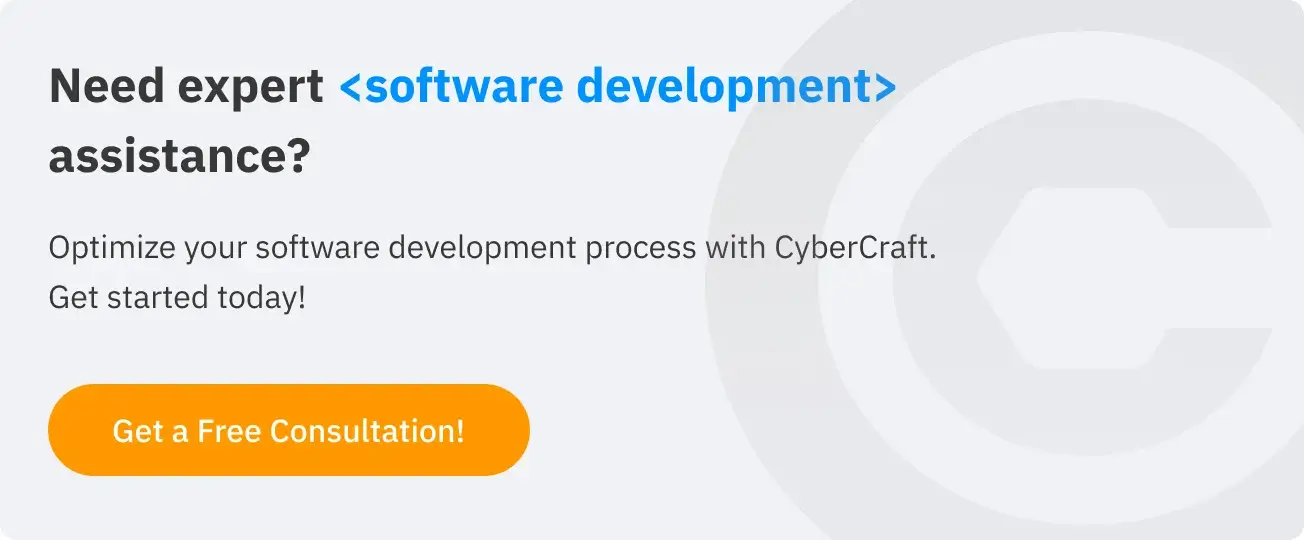E-learning
According to Statista, the e-learning market will reach $243B by 2022. The predicted growth and uncertainty in offline education related to the pandemic and significant changes in the world make e-learning products popular. Let’s deal with a tech stack required for e-learning apps and platforms.
E-learning mobile applications
Technologies for e-learning mobile application development are classified into separate groups:
- Front-end part
- Back-end part
- Interfaces and libraries
- Supporting tools to ensure security, the needed level of functionality, and the implementation of the future improvements
E-learning iOS apps
Native apps are developed for iOS or Android. E-learning iOS apps can be created with the help of two programming languages: Objective-C or Swift.
Objective-C provides capabilities of object-oriented programming languages. It’s an improved version of the C programming language. It’s notable that Objective-C appeared in the 1980s. Apple acquired it for iOS app development.
The basic idea of Objective-C implies sending messages to objects, and the main goal of creation was to enable code reusing. Specificities of the programming language include sophisticated syntax. Objective-C has been partly replaced with another programming language for iOS e-learning app development named Swift.
Swift is known as a compiled programming language that was created by Apple. In contrast to Objective-C, it includes enough modern features. APis in Swift can be easily read and maintained. Unsafe code is easily avoided in Swift because of the right approach to variable initialization, checking array indices and integers, error handling, etc. Thanks to the well-considered combination of low-oriented primitives and object-oriented features, Swift makes possible fast and powerful app development.
The comparison of technical features of Swift and Objective-C (important for e-learning iOS app development)
| Programming language | Swift | Objective-C |
| Types | Checked, but not enforced during compilation | Enforced in compile and runtime |
| Stack overflows & out of bounds | Prevented | Possible |
| Memory management for CoreFoundation | Automatic | Manual |
| Dispatch | Static method for value types | Dynamic method (message sending) |
| Generics | Enforced in compile time and runtime | Lightweight and informational for compile time |
| Files that consist interface and implementation | One file | Separate header and implementation files |
The set of tools for mobile app development consists of two basic elements: AppCode and Xcode. Xcode is the official Apple product that offers needed features and a convenient visual interface for iOS development. AppCode is an open-source tool that has fewer features than Xcode.
You can use different UI frameworks to create graphical components of the e-learning iOS apps. Highly demanded among them are SwiftUI and UIKit. UIKit is the basic tool that allows building graphical components and contains the set of templates that define design elements as interconnected blocks. SwiftUI appeared 2 years ago and works only for iOS13 and above, but it has multiple features.
E-learning Android apps
The technology stack for Android app development contains the programming language, app development tools, and the UI framework. The core programming languages applied by developers in this case are Java and Kotlin.
Java appeared more than 26 years ago and is known as a high-level object-oriented programming language. Java creators aimed to design secure, architecture-natural, and high-performance language. As a result, it has become a key pillar for Android. It’s notable that the Android SDK uses Java for apps but doesn’t apply its standards.
Kotlin is a relatively young technology. The programming language originated in 2010 by the team of IDE JetBrains. The official release happened in 2016. At the moment, the Kotlin team consists of contributors and full-time members. Kotlin is a streamlined version of Java, so switching from one to another is quite simple, although Kotlin code is much more accurate and safe.
The comparison of technical features of Java and Kotlin (important for e-learning Android app development)
|
Programming language |
Kotlin |
Java |
|
Null safe |
All variables, regardless of the type, are non-nullable. Assigning null values causes code to fail while compiling. |
In Java, users are allowed to assign null to the variable. It results in a null pointer exception when the user accesses an object reference. |
|
Extension functions |
Are available (the class could be extended with new functionality) |
Aren’t available |
|
Coroutines Support |
Creation of multiple threads to run long-running intensive operations is possible, and coroutines support suspends execution at a certain point without blocking threads while executing long-running intensive operations. |
Creating and running multiple threads in the background are possible, but managing is a difficult task here. |
|
No checked exceptions |
No checked exceptions that has both pros and cons |
Checked exceptions support is included which simplifies errors handling |
|
Data classes |
For classes that hold data, we declare a class with the keyword “data” in the class definition. After that, the compiler creates constructors and getter, setter methods |
For classes that hold data we’re supposed to define constructors, variables for storing data, getter and setter methods, hashcode(), toString(), and equals() functions |
|
Smart casts |
Smart casts are suitable for casting checks with the keyword “is-checks” |
Checking the type of variables and casting them according to our operation are mandatory |
|
Type inference |
There is no need to specify the type of each variable explicitly based on the assignment it will handle. If we want to specify explicitly, we can do. |
We’re required to specify the type of each variable explicitly while declaring. |
Let’s move on to UI frameworks and Android development tools. Android studio provides tools for building apps on all types of Android devices and has a lot of features – from visual layout editor to fast emulator. To create UI for e-learning Android apps, developers use Android UI with pre-built templates that accelerate the development process or Jetpack Compose.

Back-end tech stack and functionality of e-learning platforms
Let’s take an e-learning marketplace as an example. Its main components will be a web-based app, tools for video and data processing, and cloud storage. To integrate the functionality into a web app, we will require an API. Also, it’s possible to choose Monolithic or Microservice architecture.
Monolithic architecture corresponds with our vision if we want to create a platform that consists of a limited amount of content and users. Microservice architecture is a must-have for platforms applied for selling courses by different organizations. Monolithic architecture is cheaper and simpler in terms of development, while Microservice architecture wins as a more flexible and scalable solution.

The right set of tools enables us to transcode, upload, and stream videos. Thanks to video service, users can upload a video to the platform or send transcoded materials to the user devices. The quality of the video depends on video formats, operation memory of the device, and quality of the internet. Therefore, a video service transcodes files and generates various versions of the video in different sizes, thus allowing users to watch materials regardless of their size. You can see the schemes of transcoding and live transcoding services at the pictures below.


To arrange audio and video communication between browsers, developers use WebRTC for such platforms. This tool is suitable for desktop browsers, iOS, and Android, which is crucial for e-learning products that should provide access to all features via a mobile phone. The other two elements of video processing are transcoding and live transcoding services.
Additional tech stack required for e-learning platform is related to data processing. Streaming ETL process is applied here to move data ,and it’s also linked with databases and analytics. ETL provides extracting, transforming, and loading data.
The next component of the system is storage that consists of four components: main database, analytics, file storage, and real-time database. Together with other elements, they constitute the back-end tech stack of the e-learning platform.
Summing up
The type of technologies lying under the hood of the e-learning app or platform depends on the functionality. If you need to develop such a tech solution, feel free to get in touch with CyberCraft to discuss your goals and requirements. Our team has been professionally engaged in e-learning software development since 2012, so we have deep expertise in the creation of scalable apps and platforms.




